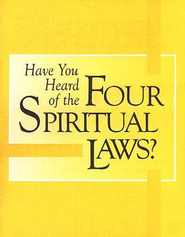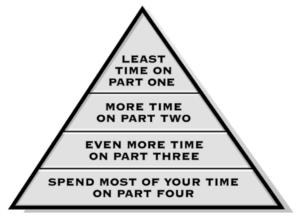By it’s very definition, Turnaround requires a new kind of effort. Turnaround implies a new direction and thus requires, at the very least, a new intensity of effort. Most often, however, Turnaround will require new efforts that depart significantly from the plans and processes of the past.
Turnaround for a church, like assembling modular furniture, is easier if there is a plan to follow. The old, old adage really applies well here: Plan your work and work your plan.
- What sort of plan is needed?
- How can the faithful church leader evaluate current plans?
- How can the innovative leader introduce new plans and programs?
What sort of plan is needed? The plans for turnaround need to be those that work today rather than the plans we have always used because we have always used them. This is not to say that Turnaround Leaders will automatically discard all past methods. It is to say that plans must be evaluated based on effectiveness, ease of operation and the ability to be part of a system for consistent repetition.
Effectiveness must be a major criteria to evaluate all current plans for Turnaround. Jesus, himself, advocated that kings who plan for battle evaluate the size of the defending force compared to the invading force before making their final battle plans (see Luke 14:31).
The core efforts toward Turnaround involve four essential processes of inviting, connecting, discipling and sending. Plans that are developed must therefore address these essential processes as they relate to people not yet connected to the church.
If we start with inviting, answering these types of questions will go a long way toward formulating a plan.
- Who will be invited? How will they be invited? What will they be invited to attend?
- How will contact information be gathered when they do attend?
- What next steps will lead to a second or third visit?
- Are new member and new believer classes ready?
- How will people, new and old, from my congregation be challenged, equipped and resourced to go out into the community?
Weekly Invitations
The larger church or the church at the height of its Turnaround will be able to encourage frequent, even weekly, invites. A pastor in such a setting would be well served to include as part of his closing remarks at worship the challenge “Who will you invite to attend with you next week?”
Cautions and Conundrums
The law of diminishing returns cautions us to remember that frequency of exposure to a message may diminish responses to that message. “There he goes again” may be the response from folks who have heard but not acted on the end-of-service-plea to invite people.
Opportunity To See has a residual impact. In its early days of marketing McDonald’s was said to have had two week cycles in its advertising. Ads ran for two weeks then disappeared for two weeks since the Opportunity To See had a residual impact. This means that the preacher doesn’t have to say it every week for people to assume they hear it every week.
When we forget that people forget we fall prey to the conundrum that encouraging people to invite their friends must be done with enough scarcity that each motivating message is heard as fresh, new and important while being done with enough frequency that people have just enough Opportunity To See to prepare them act rather than to irritate them to point that they ignore both the message and the messenger.
Seasonal Invitations
The smaller church or the church not at the peak of its Turnaround will do well to identify two or three periods of focus in the course of the year to highlight invitations. Many churches find that an emphasis on invitations in the Spring and again in the Fall work well.
These all-out efforts with a Big Day strategy allow intentional, high-energy invite efforts to be paired with a follow-up period of contact and discipleship.
For example, suppose a Fall date in October is determined to be an effective date for Big Day efforts. Promotional materials, worship plans, sermon series prep, and volunteer training all have to be addressed in July and August to be implemented in September and October. Then follow-up and assimilation of new attenders will require on-going efforts in November and December. Efforts to prepare for the Fall Big Day must begin well in advance of the date and efforts to conserve the results must continue well after the Big Day.
For the church in need of Turnaround this activity level alone may stretch the volunteer base, the outreach budget and the ability to conserve the results. Focused energies are necessary to accomplish these tasks so don’t try to do everything but do try to be effective.
JUMPSTART YOUR MINISTRY: Develop a Culture of Invitation
 Include two invite cards in each worship folder. At the conclusion of the service ask everyone to put one card in each hand. As they hold up those cards in the right hand instruct them to pray “Lord place in my path this week one person with whom I can share this invitation.”
Include two invite cards in each worship folder. At the conclusion of the service ask everyone to put one card in each hand. As they hold up those cards in the right hand instruct them to pray “Lord place in my path this week one person with whom I can share this invitation.”
Repeat with the second card held in the left hand.




